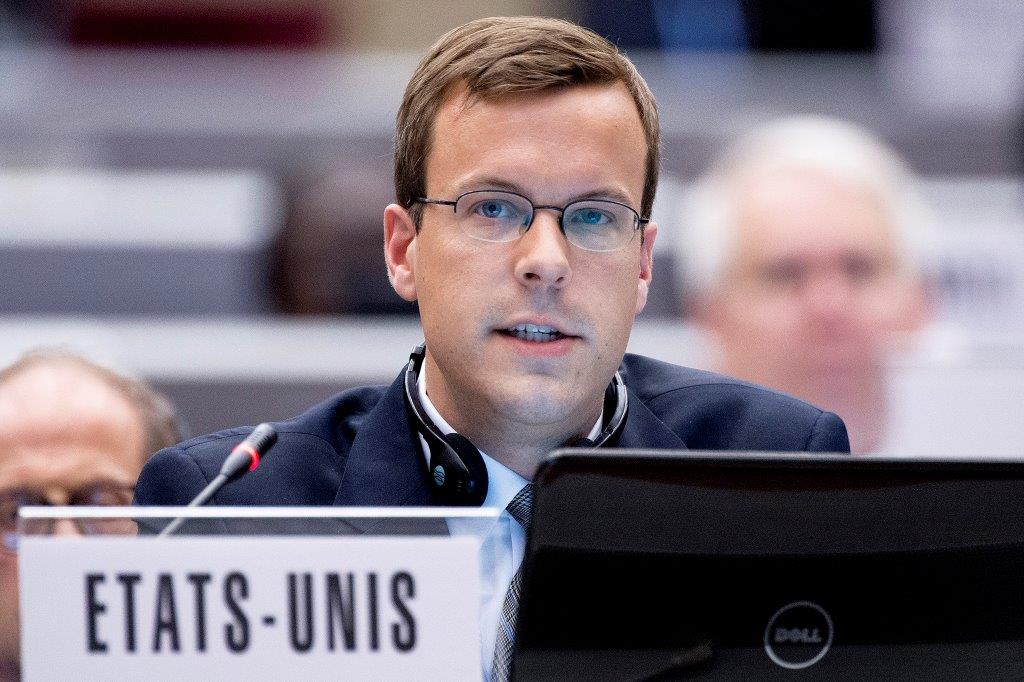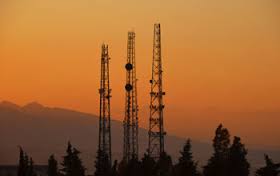NTIA Blog
National Broadband Map has Helped Chart Broadband Evolution
When NTIA launched the National Broadband Map in 2011, American consumers and businesses had few places to turn to when trying to determine who offered broadband in their communities. The National Broadband Map has not only filled that void but has helped detail the evolution of broadband in the United States as providers upgrade or expand their networks to meet the growing demand for faster broadband.
For the last five years, each state, territory and the District of Columbia has collected the broadband availability data that powers the National Broadband Map with the help of grants funded by NTIA through the 2009 American Recovery and Reinvestment Act. Every six months, states have submitted to NTIA data compiled from information gathered from broadband providers, public and commercial data, consumers and local governments. Today, we are releasing updated broadband map data, current as of June 30, 2014.

This map displays availability of higher broadband speeds across demographic characteristics
Spotlight on NTIA: Chris Hemmerlein, Telecommunications Policy Specialist, Office of International Affairs
This post is part of our “Spotlight on NTIA” blog series, which is highlighting the work that NTIA employees are doing to advance NTIA’s mission of promoting broadband adoption, finding spectrum to meet the growing demand for wireless technologies, and ensuring the Internet remains an engine for innovation and economic growth.
Chris Hemmerlein says he feels fortunate to have a job that he enjoys so much. Hemmerlein, a telecommunications policy specialist in the Office of International Affairs, handles Asia- and United Nations-related issues for NTIA.

Source: International Telecommunication Union
After spending a year teaching English in Japan and studying in Australia as an undergraduate student, Hemmerlein realized his true calling was international affairs. Hemmerlein would go on to earn a Master’s Degree in international relations at the University of California at San Diego.
Stakeholders Continue Historic Work on Internet DNS Transition at ICANN Singapore Meeting
Last week, the Internet Corporation for Assigned Names and Numbers (ICANN) held its 52nd meeting in Singapore, where the global multistakeholder community continued progress on a proposal to transition the United States role related to the Internet Domain Name System.
I was pleased to see the amount of energy and professionalism exhibited by the nearly 1800 participants at the ICANN meeting. The Internet’s stakeholders are driving this transition and are demonstrating that businesses, technical experts, and civil society groups are best equipped to set the future direction of the Internet. Under this multistakeholder model, no one party can control the Internet or impose its will. And that’s what’s enabled the Internet to flourish and evolve into this global medium that has torn down barriers to free speech and fueled economic growth and innovation.
It is so important that we get this transition right. If it doesn’t take place, we will embolden authoritarian regimes to seek greater government control of the Internet or to threaten to fragment the Internet, which would result in a global patchwork of regulations and rules that stifle the free flow of information.
Expanding the Benefits of Broadband in Mississippi
The National Telecommunications and Information Administration’s BroadbandUSA team convened a productive workshop in Jackson, Miss., last week to explore ways to close the digital divide in a state that continues to expand broadband connectivity and adoption.
The event was the second in a series of regional workshops that NTIA is hosting across the country as part of its new BroadbandUSA program, which is helping communities improve local broadband capacity and utilization.
The new initiative – highlighted by President Obama last month – builds on lessons learned and best practices from NTIA’s successful broadband grant programs, which invested more than $4 billion in network infrastructure, public computer centers, digital literacy training and broadband mapping. BroadbandUSA provides resources – including technical assistance, toolkits and guides – to help communities assess local broadband needs, engage stakeholders, explore business models, evaluate financing options and attract private-sector investment.
Supporting Wireless Innovation Through a “Model City”
 The United States is fast becoming a wireless nation. The demand for wireless devices in all sectors of our lives – from smartphones to smart utility meters – is driving the exploding demand for access to spectrum. By 2019, Cisco predicts there will be a seven-fold increase in data traffic.
The United States is fast becoming a wireless nation. The demand for wireless devices in all sectors of our lives – from smartphones to smart utility meters – is driving the exploding demand for access to spectrum. By 2019, Cisco predicts there will be a seven-fold increase in data traffic.
The Obama administration has been working hard to meet this demand, pledging to make 500 megahertz of additional spectrum available for mobile broadband by 2020. The Commerce Department’s National Telecommunications and Information Administration (NTIA), which manages the federal government’s use of spectrum, has been working with the Federal Communications Commission (FCC) and other federal agencies to make more federal spectrum available for commercial use. At the same time, we are working to balance the needs of federal agencies that rely on spectrum to perform a wide range of mission-critical functions – from communicating with weather satellites, to navigating passenger planes and protecting our nation’s borders.
Meeting the sky-rocketing demand for wireless technologies has required new approaches to freeing up spectrum beyond the traditional model of clearing spectrum for exclusive commercial use. Spectrum sharing between federal and nonfederal users also has to be part of the solution.
AWS-3 Auction Highlights New Approach to Spectrum Policy
By Lawrence E. Strickling, Assistant Secretary of Commerce for Communications and Information and NTIA administrator, and Alexander Macgillivray, U.S. Deputy Chief Technology Officer, White House Office of Science and Technology Policy
The most successful auction of radio spectrum so far came to a close today, drawing nearly $45 billion in bids for 65 megahertz of spectrum. While clearly a ringing financial success, the AWS-3 auction also is an important milestone in the Obama administration’s efforts to meet the President’s goal of making available 500 megahertz of spectrum for wireless broadband by 2020.
The success of the auction, conducted by the Federal Communications Commission (FCC), was made possible in part by an unprecedented level of collaboration between NTIA, affected federal agencies, wireless industry representatives, the FCC, and Congress.
NTIA Employees Win Departmental Awards for Outstanding Work
Today, I’m happy to recognize a number of NTIA employees who received Department of Commerce Gold and Silver awards for their outstanding contributions. Deputy Secretary of Commerce Bruce Andrews presented the awards at a special ceremony today.
We should all take pride in the important work we do at NTIA. We are working hard day-to-day to ensure that the Internet remains an engine for economic growth and innovation; to promote broadband access and adoption so that no one is left behind in the digital revolution; and to manage the federal government’s use of spectrum, helping federal and commercial entities alike find new spectrum sharing opportunities. I am particularly pleased that so much of our work is being recognized by the Department as meeting the very high standards for Gold and Silver Medals. Congratulations to these fine public servants.
Here are the NTIA honorees:
Gold Medal Award winners:
NTIA Announces BroadbandUSA Effort to Assist Communities with Broadband Plans
Over the past five years, we at NTIA have seen first-hand through our broadband grant program the power of broadband to transform lives and impact communities. Broadband has become a cornerstone of economic growth, providing Americans the tools they need to participate in the rapidly growing digital economy.
NTIA invested more than $4 billion in grants through the Broadband Technology Opportunities Program to build network infrastructure, establish public computer centers, and develop digital literacy training to expand broadband adoption. Through those projects, we’ve made significant progress. Our grantees have built or upgraded more than 113,000 miles of fiber and connected nearly 25,000 community anchor institutions, such as schools and libraries. Our grantees also have established or upgraded 3,000 public computer centers, trained more than four million people and helped roughly 735,000 households sign up for broadband. An independent study released by NTIA today shows that these grants are projected to increase economic output by as much as $21 billion annually.
Promoting Spectrum Sharing In the Wireless Broadband Era
In the summer of 2010 -- just three years after the introduction of the iPhone -- President Obama called on the National Telecommunications and Information Administration (NTIA) to collaborate with the Federal Communications Commission (FCC) to free up critical radio spectrum to fuel the breakneck growth of the wireless broadband market. Today, this directive is more pressing than ever, with the wild popularity of smartphones and tablets driving unprecedented commercial demand for mobile bandwidth.
Identifying the spectrum to keep up is a top priority for NTIA, which manages federal spectrum usage. And promoting spectrum sharing across the public and private sectors is an important key to achieving this goal.
At NTIA, we recognize that spectrum is the lifeblood of the mobile broadband revolution. We are committed to ensuring the industry has the bandwidth it needs to continue to innovate and thrive.
But we face an important balancing act since federal agencies also rely on this precious and finite resource to perform all sorts of mission-critical functions – from communicating with weather satellites (National Oceanic and Atmospheric Administration) to navigating passenger planes (Federal Aviation Administration) to operating weapons systems (Defense Department).
Spotlight on NTIA: Mike Dame, Program Director, State and Local Implementation Grant Program
This post is part of our “Spotlight on NTIA” blog series, which is highlighting the work that NTIA employees are doing to advance NTIA’s mission of promoting broadband adoption, finding spectrum to meet the growing demand for wireless technologies, and ensuring the Internet remains an engine for innovation and economic growth.
 It’s not surprising that Mike Dame ended up working for the federal government on issues that ultimately will assist emergency first responders.
It’s not surprising that Mike Dame ended up working for the federal government on issues that ultimately will assist emergency first responders.
Dame, program director for NTIA’s State and Local Implementation Grant Program (SLIGP), grew up in the Washington area and his father worked for the Federal Aviation Administration. Dame had long planned to follow his Dad into public service, but had his hopes set on working for the FBI, the Bureau of Alcohol, Tobacco, Firearms and Explosives (ATF) or some other federal law enforcement agency.
Poor vision, however, derailed his plans for a federal law enforcement career so instead he switched his college major to a focus on government and politics. Despite this, Dame has still found ways to work on issues important to law enforcement while also fulfilling his desire for public service.
